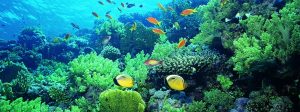
How to Maintain a Healthy Aquatic Environment?
Maintaining a healthy aquatic environment is crucial for the well-being of aquatic life and the overall ecosystem balance. Whether you have a fish tank, pond, or aquarium, proper care and maintenance are essential. Here are some key steps to ensure a healthy aquatic environment:
Water Quality Management:
- Regularly test the water parameters such as pH, ammonia, nitrites, and nitrates using appropriate test kits. Aim for stable and suitable levels for the species you’re keeping.
- Conduct partial water changes regularly to remove accumulated toxins and replenish essential minerals. Typically, a 10-20% water change every 1-2 weeks is recommended.
- Use dechlorinated water for water changes and ensure the temperature matches the existing water to avoid shocking the aquatic inhabitants.
Filtration System Maintenance:
- Clean and maintain your filtration system according to the manufacturer’s instructions. This may include rinsing filter media, replacing cartridges, and unclogging tubing.
- Ensure proper water flow through the filter to prevent debris buildup and maintain efficient biological filtration.
Aquatic Plant Care:
- If your aquatic environment includes live plants, provide adequate lighting, substrate, and nutrients for their growth.
- Prune dead or decaying plant matter regularly to prevent nutrient imbalances and maintain water clarity.
Fish and Livestock Management:
- Avoid overstocking your aquatic environment as it can lead to poor water quality and stress among the inhabitants.
- Research the specific needs of the fish and other aquatic creatures you’re keeping, including water parameters, diet, and compatibility.
- Quarantine new additions before introducing them to the main aquatic environment to prevent the spread of diseases.

Maintaining Oxygen Levels:
- Ensure adequate oxygenation of the water through aeration devices such as air pumps, airstones, or water surface agitation.
- Monitor oxygen levels, especially during hot weather, or if you notice signs of oxygen depletion such as gasping fish or surface film.
Regular Monitoring and Observation:
- Keep a close eye on the inhabitants and observe their behavior regularly. Look out for signs of stress, illness, or aggression.
- Monitor for any changes in water clarity, odor, or color, which could indicate underlying issues with water quality.
Preventing Algae Growth:
- Maintain a balance of nutrients and light to prevent excessive algae growth. Consider using algae-eating organisms like snails or algae-eating fish.
- Regularly clean algae from tank walls, decorations, and substrate to prevent buildup.
Proper Feeding Practices:
- Feed your aquatic inhabitants an appropriate and varied diet to meet their nutritional needs. Avoid overfeeding, as uneaten food can decay and degrade water quality.
By following these guidelines and staying proactive with maintenance tasks, you can create and sustain a healthy aquatic environment for your aquatic life to thrive. Regular care and attention will contribute to the well-being of your aquatic pets and the overall beauty of your aquatic setup.
Continue Reading



